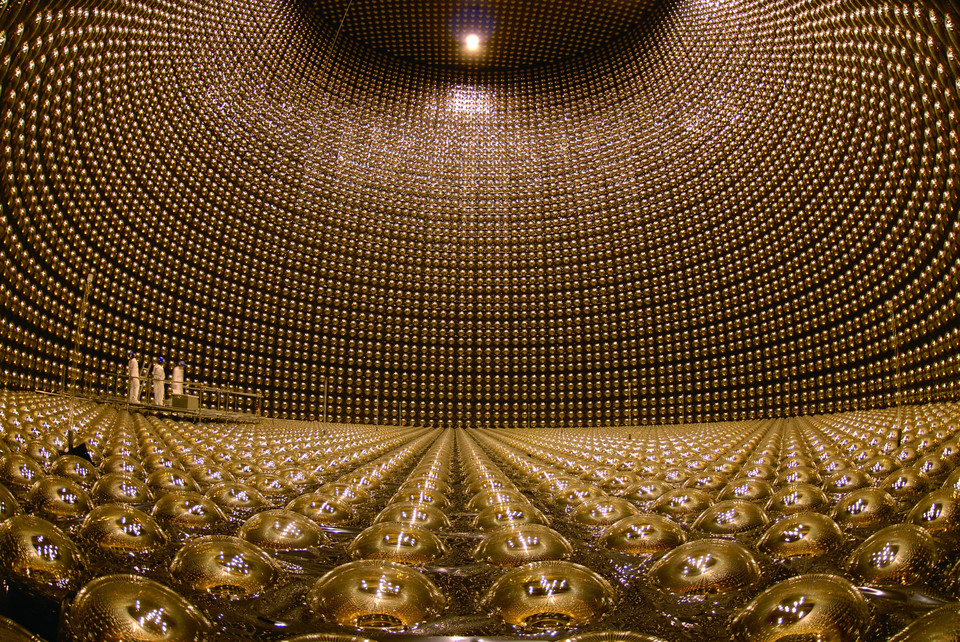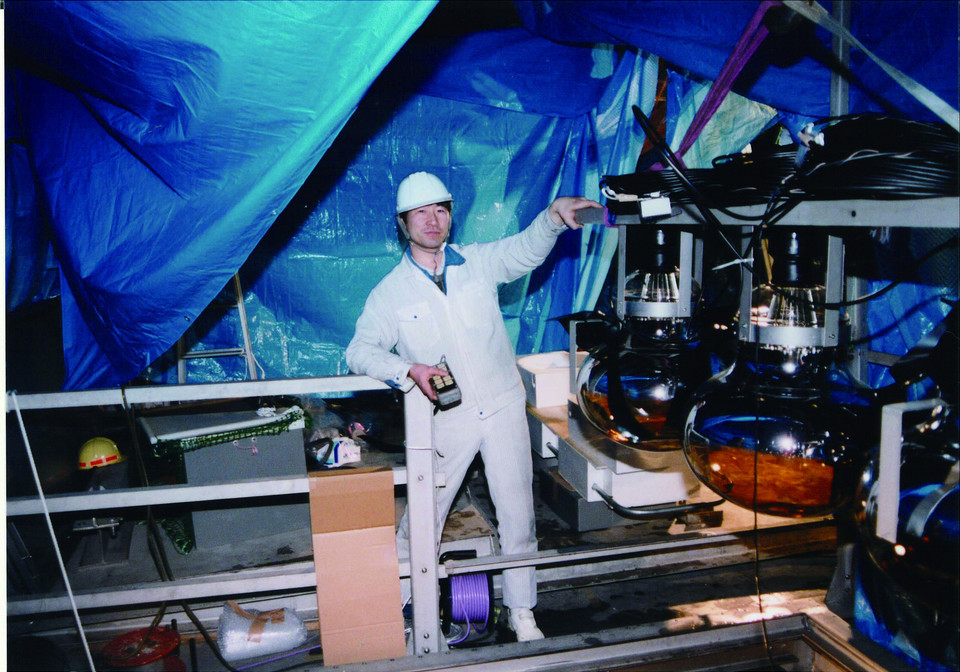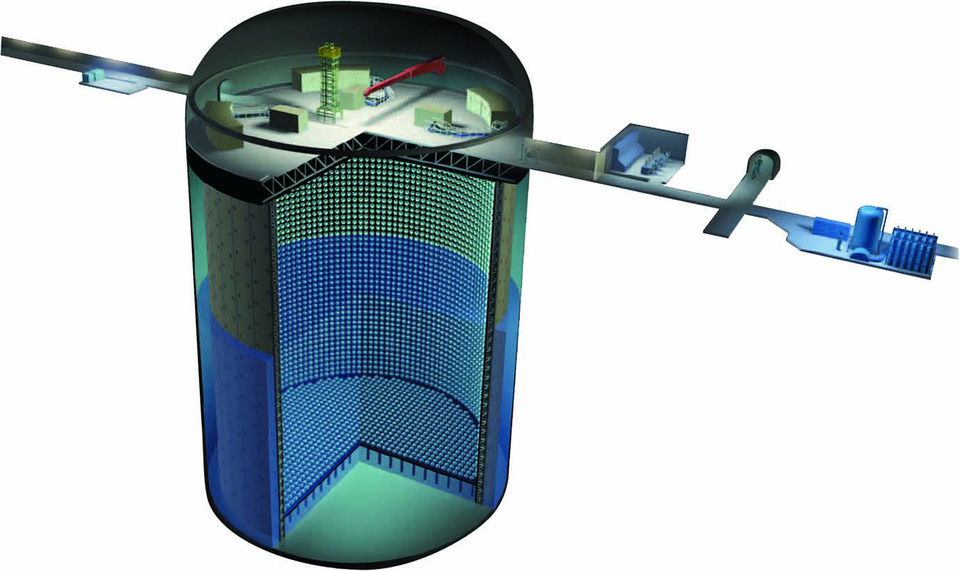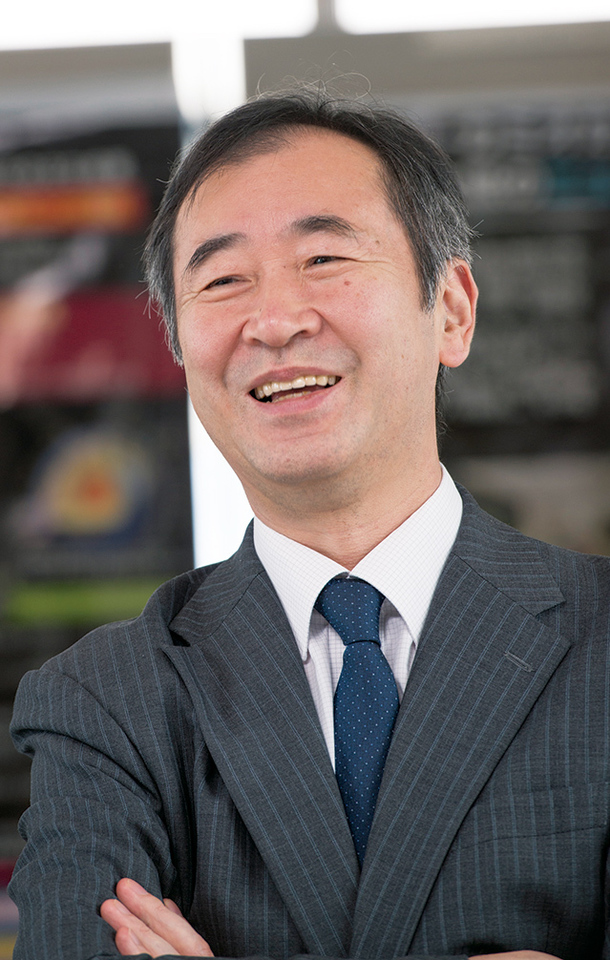Dr. Takaaki Kajita, director of the Institute for Cosmic Ray Research (ICRR) at the University of Tokyo, was one of the two winners of the 2015 Nobel Prize in Physics. The award was for the discovery of a type of neutrino oscillation; this showed that neutrinos have mass, contrary to what was previously assumed. In announcing the award, the Royal Swedish Academy of Sciences noted, “The discovery has changed our understanding of the innermost workings of matter and can prove crucial to our view of the universe.”
Neutrinos are among the most common particles in the universe. They are constantly flying through the space around us in large numbers. But since they very rarely react to other matter, they are extremely difficult to detect. They have been studied at an observatory in Kamioka, Gifu Prefecture, using detectors—Kamiokande and its successor, Super-Kamiokande—installed in a mine site 1,000 meters (about 0.6 miles) underground to avoid interference from unrelated cosmic rays. Now plans are being made for an even more powerful detector, Hyper-Kamiokande.
Dr. Kajita began his study of neutrinos as a research associate at the University of Tokyo in 1986. Neutrinos are observed using a huge tank full of purified water and highly sensitive photomultiplier tubes to detect the light given off on the rare occasions when a neutrino strikes a water molecule. Based on analysis of a tremendous volume of observational data, in 1998 he discovered the phenomenon of neutrino oscillation, meaning that the particles sometimes change type. This would not be possible if they did not have mass.
This discovery, which led to the Nobel Prize award, was the fruit of collaborative efforts by a team of over 100 researchers. And Dr. Kajita declares that he could not have won the prize without the help of two key figures: Dr. Masatoshi Koshiba, whom he identifies as his greatest benefactor, and the late Dr. Yoji Totsuka, the mentor who directed his research. Dr. Koshiba was the first to discover neutrinos from outside the solar system at the Kamioka facility, and he was awarded the Nobel Prize in Physics in 2002. It was his work that served as the basis for Dr. Kajita’s research, which led to his own Nobel award 13 years later.
Asked to explain the significance of neutrino studies, Dr. Kajita stresses the importance of basic scientific research: “Though it has almost nothing to do with our everyday lives, research into the origins of matter in the universe has great significance for the human race.” But he voices serious concern about the lack of progress in developing the next generation of researchers in Japan. Noting that emerging countries have become increasingly prominent in basic research since around 2000, Dr. Kajita declares that Japan must urgently step up its development of younger researchers in basic fields. He calls for improvement in the research environment, saying that it is important to create more steady positions for people completing their graduate studies so as to increase the number of researchers.
Dr. Kajita’s next goal is to detect gravitational waves, whose existence was proposed about 100 years ago by Albert Einstein, and which have become a major research topic for physicists. “Some day,” he says, “I hope to observe gravitational waves from when the universe was born.” The search for answers to the mysteries of the universe is a never-ending quest.
Takaaki Kajita
Born in 1959. Graduated from the Faculty of Science, Saitama University, in 1981, and received his PhD in physics from the University of Tokyo in 1986. He was involved in research into neutrinos from his days as a graduate student, taking part in the original Kamiokande project and in the construction and operation of Super-Kamiokande. Since 2008 he has been director of the University of Tokyo’s ICRR.


































































































































